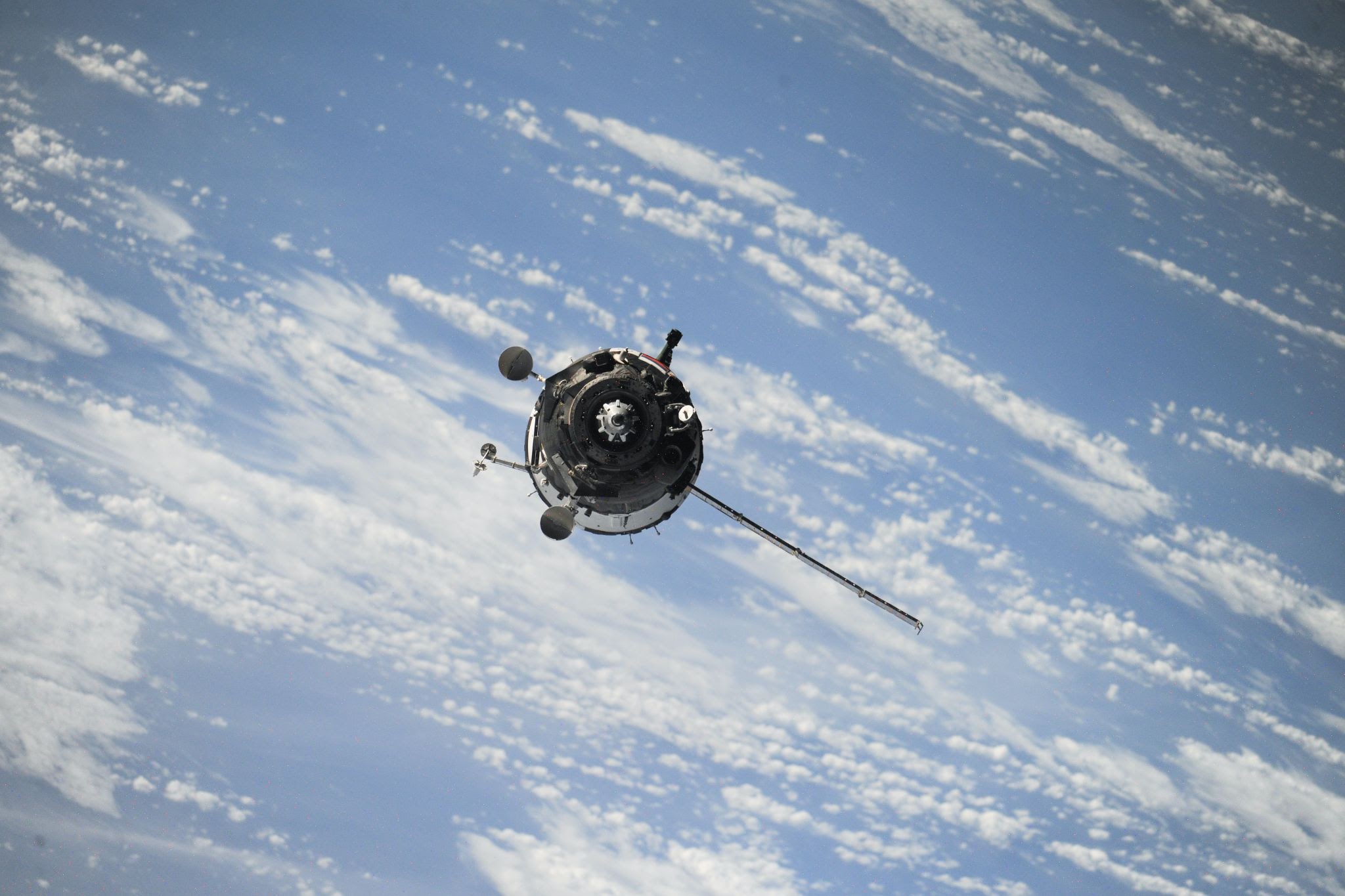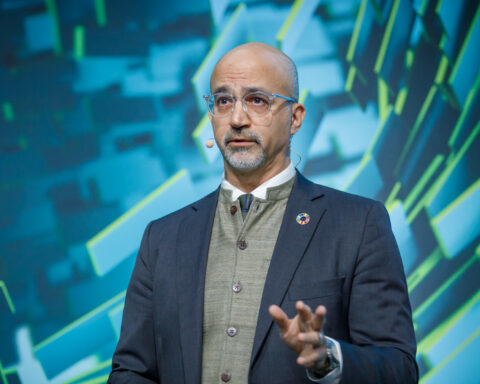Collective rationality seems to be an unreachable goal for humanity. The more access we have to a free good, the more we risk the well-being of the community in the pursuit of attaining the individual goals we set for ourselves. This scheme indeed doesn’t sound too unfamiliar, but it has undoubtedly extended its limits. A case in point is the cluster of space debris that is being accumulated at an unprecedented rate as we multiply the number of spacecraft launches in low-Earth orbit (LEO).
The so-called orbital (grave) yard cannot be spotted with the naked eye. Mainly because the many orbiting objects are not illuminated, their existence remains unknown to the average person. But their population consists of a number that is not to go unobserved, and so are the far-reaching consequences of our inertia in front of the unfolding disaster. Along with advancements in technology, more spacecraft manufacturers are shifting up the gear for an expansion of travel technologies that slowly crowd the LEO, resulting in devastating repercussions.
The low-Earth orbit is one of the three levels of orbits whose proximity to Earth is the closest, ranging from around 160km to 1000km above Earth. This altitude provides enough room for astronomical investigations to be conducted. Thus, some of the most important space shuttles circle the Earth within this range, such as the International Space Station (ISS) or scientific and internet satellites conducted by commercial agencies such as SpaceX.
However, many space operators do not take into consideration the mitigation efforts for providing sustainable space missions. As far-fetched as it might sound, the orbital environment presents a vital part in our sustenance on Earth. Its protection should become a number one priority not only due to the need for geospatial investigation and internet coverage but also to the many environmental demerits that result from its inefficient use.
What is space debris?
Space debris consists of two varieties of junk orbiting the Earth. The natural debris pieces are small or large remains from meteoroids. In contrast, artificial debris refers to the non-functional human-generated pieces of junk that have been left to float into space.
The latter variety comes in different forms, such as remains from large-scale defunct satellites that have either failed or completed their missions and have been left to orbit the Earth. Such is the case with the European Space Agency’s large Earth-observing satellite, Envisat, which stopped functioning in 2012 and still orbits the LEO.
Other remains come from satellite collisions, hardware, objects left behind by astronauts (e.g., thermal blankets), or smaller pieces that can equal nanoparticles or can measure up to 10cm. Examples include paint flecks or lumps of metal left behind after rocket launches or have been produced as a result of fragmentation events.
This diversified list of space clutter proves how multifunctional the methods of debris removal must be in order to dispose of objects that range in size and volume. The space archaeologist and space junk expert Alice Gorman stresses that due to this range of objects ‘‘There is no way that a one-size-fits-all approach is going to do it”. Therefore different methods will be needed according to the necessities of the orbital clutter.
What may come as a surprise to many is that the smaller debris particles pose the greatest threat to orbital traffic. While the larger objects are fewer and being recorded by the space agencies, the smaller objects are untraceable and exist in numbers of 10,000s. It has been reported that there are around 2,000 active satellites and 3,000 dead ones orbiting Earth.
Regarding smaller bits of debris, there are about 34,000 recorded items bigger than 10 centimeters in size and millions of smaller particles that cannot be precisely recorded. This increases the collision risk damaging the operational satellites and eventually creating endless small debris particles that result in what many feared would be the future of the LEO, the Kessler Syndrome.
The Kessler Syndrome
Donald Kessler, a former NASA scientist, predicted in 1978 that the already existing space junk, which has been formed and continues to be generated as more spacecraft are being sent into orbit, can enter a self-supported permissive cycle.
Due to collisions and evenly spread litter items, the quantity of overproduced debris could create an unstable environment for the existence of space shuttles in the near future. His forecast of the possible chain reaction was received by scientists with open arms, yet the methods of prevention have been far from reaching a solution that could clear up all the clutter left around the LEO.
Why is it becoming more hazardous?
For almost a century, we have been navigating the Earth’s orbit in pursuit of exploration and human advancement. From the very beginning, the existence of meteoroids posed a great threat to the sending of space shuttles into LEO. However, it was quickly proven that there was a low probability of a collision event as long as the satellites were smaller in size.
Yet, with more low-cost space shuttles being launched into space, as satellite mega-constellations are being formed, the life duration of modern shuttles has become shorter. Thus, owing to the cheaper construction material used, these shuttles need to be removed from the orbit much quicker.
Not only does that mean that a greater number of small shuttles has to be sent into the LEO but also that the large space that modern satellites occupy in orbit along with the number of defunct satellites that have failed at deorbiting and remained in the LEO increase the chances of fragmentation events.
Moreover, the speed by which the orbital debris travels is around seven times faster than a bullet, reaching approximately 18,000km per hour. Therefore, the great kinetic energy of traveling objects can cause extreme damages. As of 2008, around 100 Space Shuttle widescreens have had to be replaced due to the small craters that had been formed into the surface.
Orbital junk is thus a threat not only to the satellites and other spacecraft, but astronauts’ lives are similarly under great danger. The debris pieces (whose diameter measures from 1 up to 10 cm) can break through astronauts’ costume or perforate their helmet glass which can cause (irreparable) injuries or end their lives. Thus, when astronauts on the ISS go out of the station to repair the damage created by other debris items, they put their lives at great risk as they float in the cluttered orbit.
Furthermore, over recent years, more commercial companies have been deploying their spacecraft into the LEO than non-private companies. The statistical data shows that the number of commercial aircraft has outnumbered that of the civil or defense ones by a great amount.
In another report, it has been found that the number of unregistered orbital objects has increased significantly and is expected to continue to do so for the next few years. Due to miscommunication, lack of communal data sharing, and space surveillance, these trends can result in devastating consequences for all the space actors.
Catastrophic events
Fragments from collisions that occurred purposefully or unintentionally have increased the number of orbital debris. In 2007, the Chinese space agency deliberately destroyed one of its weather satellites, Fengyun-1C, via an anti-satellite test, creating a cloud of debris in the LEO.
Similarly, in 2009, the accidental collision between the functional American satellite and the non-working Russian spacecraft sped up an increase in the space junk population by 70%. These occurrences are proof of the inaccuracy with which we can prevent such events from happening and the unreliability of spacecraft as it often is unable to respond to orders.





